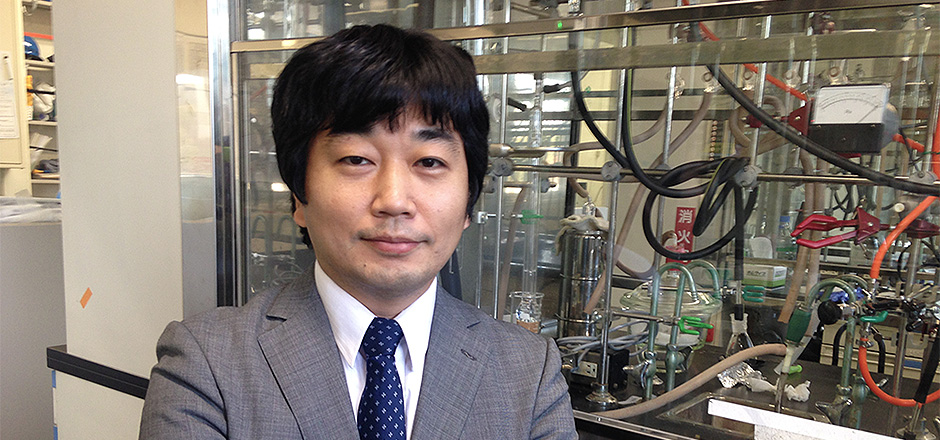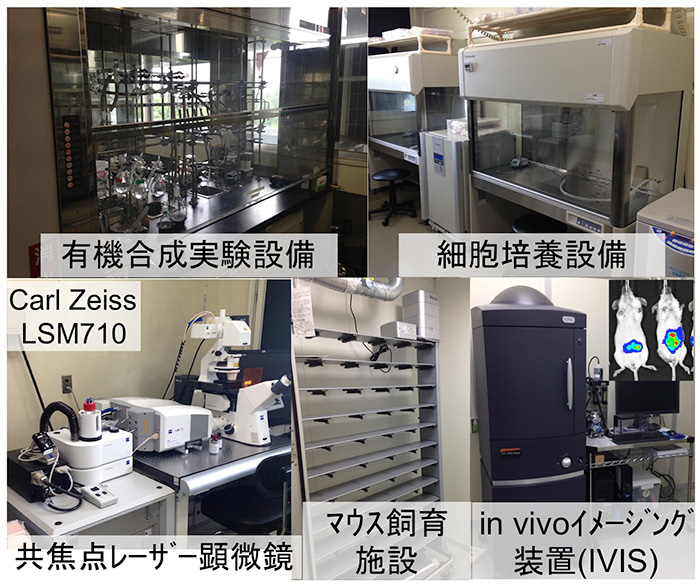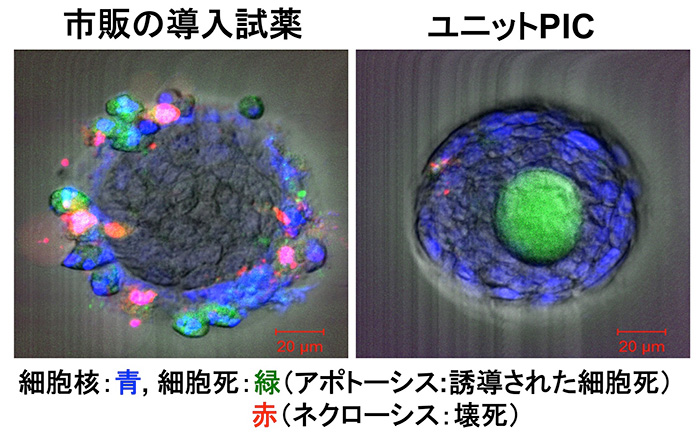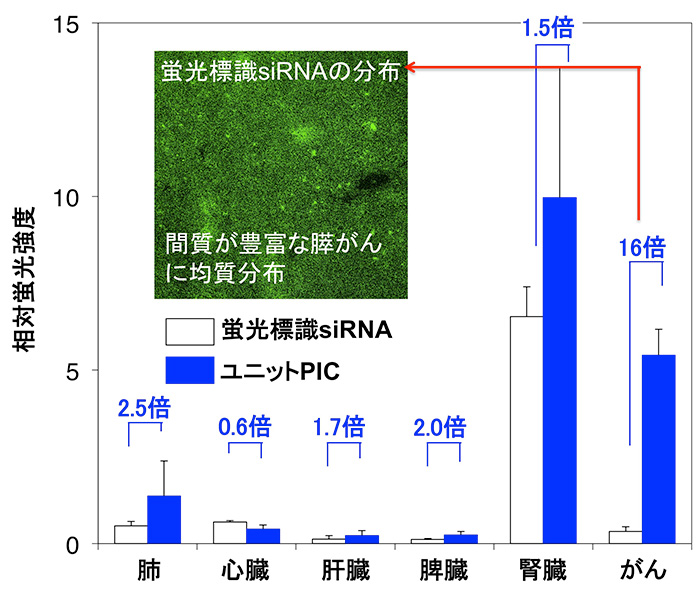Research and Development Projects Adopted in FY2014
Development of innovative nucleic acids delivery systems based on polymer nanotechnology
Project Leader:Nishiyama Nobuhiro
Professor, Chemical Resources Laboratory, Tokyo Institute of Technology

Nucleic acids such as antisense oligonucleotides and siRNAs have a great potential as innovative therapeutics owing to genomic DNA sequence-based rational drug design against various diseases, target specificity and cost-effective production.
For clinical applications of nucleic acids, however, it is essential to develop efficient delivery systems of nucleic acids to the target cells after the systemic administration.
So far, a variety of delivery systems composed of cationic lipids and polymers have been developed and several systems have already reached clinical studies; however, there are still many technical tasks in the development of delivery systems to realize practical use of nucleic acid-based drugs.
In this context, we believe that clinically useful delivery systems should have the simplest structure while meeting several essential requirements, and have very recently developed a novel siRNA delivery system based on a unit polyion complex (uPIC) composed of a single molecule siRNA and synthetic block copolymers.
We have demonstrated that uPIC-based siRNA delivery systems show prolonged circulation, tumor-specific accumulation, high tissue penetrability, potent therapeutic efficacy and safety after the systemic administration.
In this project, we aim to optimize the chemical structures of uPIC-forming block copolymers to enhance the delivery efficiency.
Also, we develop elemental technologies such as novel tumor cell-targetable ligands, environment-responsive functional polymers and biocompatible polymers circumventing long-term accumulation, and integrate these technologies into uPIC to construct a clinically useful nucleic acids delivery system.
We are willing to collaborate with companies and medical institutions towards overcoming intractable diseases and creation of new industries.
<Figure1>
In the principal investigator’s laboratory, the facilities for organic synthesis, cell culture and animal experiments are available,
allowing to perform all the experiments from the polymer synthesis to the biological evaluations for the development of uPIC-based siRNA delivery system.
The confocal scanning laser microscope (Carl Zeiss LSM710) and in vivo real-time imaging system (IVIS) are also available.
<Figure2>
Induction of apoptosis by trasnfection of siRNA targeting the mitotic kinase to the 3D-cultured spheroid model of human pancreatic cancer (BxPC3) cells:
In the case of commercially available reagents, induction of apoptosis (green) was limited to the surface of the spheroid, and necrotic cells (red) were also observed.
On the other hand, uPIC-based siRNA delivery system allowed efficient instruction of apoptosis inside the spheroid without the necrotic damage.
<Figure3>
Biodistribution of fluorescently labeled siRNA formulated in the uPIC-based delivery system in the mice bearing human pancreatic cancer (BxPC3) at 24-hour post-intravenous administration:
uPIC selectively accumulated in solid tumors, achieving 16-fold higher tumor accumulation compared with naked siRNA. In addition,
uPIC showed homogeneous distributions in the tumor tissue (inserted photograph), demonstrating its excellent tissue penetrability.



